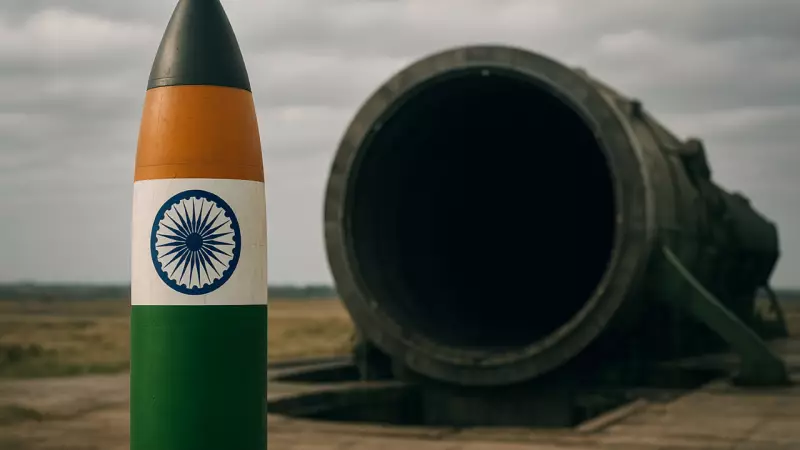
The Global Nuclear Domino Effect
Christopher Nolan's film Oppenheimer chillingly portrays the father of the atomic bomb predicting that once America split the atom, others would inevitably follow. This prophecy became reality as the Soviets, British, French, and Chinese all raced to harness nuclear power for warfare. Decades later, India joined this fateful lineage of nuclear-armed nations.
The nuclear landscape shifted dramatically when US President Donald Trump announced in October that the United States would immediately resume nuclear weapons testing. This declaration prompted sharp concern from Moscow, with senior Russian officials telling international media they awaited formal explanation from the White House. Russian officials warned explicitly that if Washington restarts nuclear testing, Russia will follow suit.
India's Strategic Crossroads
For India, once a nuclear outsider but now a mature atomic power, Trump's announcement resurrects a critical question: should India resume nuclear testing after more than two decades of voluntary restraint?
India last conducted nuclear weapons testing in 1998 under Operation Shakti and declared a unilateral moratorium on further tests. Although New Delhi never signed the Comprehensive Test Ban Treaty (CTBT), this restraint enabled landmark achievements, most notably the 2008 Indo-US civil nuclear agreement that ended decades of technological isolation.
These diplomatic gains came with implicit conditions. The United States retains the right to suspend nuclear cooperation if India tests again, and the Nuclear Suppliers Group waiver explicitly references India's voluntary testing moratorium. While India maintains legal freedom to test, the political and economic consequences could be substantial.
The Testing Debate Within India's Strategic Community
Within India's defense and strategic circles, several questions persist regarding the nation's nuclear capabilities. Experts debate whether the 1998 thermonuclear designs remain fully validated and whether advancements in warhead miniaturization and Multiple Independently Targetable Re-entry Vehicle (MIRV) systems have rendered older data obsolete. The successful Agni-5 MIRV test earlier this year reignited these technical discussions.
Proponents of renewed testing present three primary arguments. First, they emphasize credibility, asserting that live detonations would validate India's thermonuclear design margins, particularly for advanced delivery systems and naval warheads facing extreme operational stresses.
Second, testing advocates highlight deterrence signaling value. A single confidence test, framed as reaffirmation rather than escalation, could reassure adversaries that India's nuclear deterrent remains reliable and modern.
Third, supporters point to the shifting global context. If the United States and Russia resume explosive testing, the diplomatic isolation India faced in 1998 might not repeat itself given changed international dynamics.
The Significant Costs and Strategic Risks
Even testing advocates acknowledge substantial limitations and risks. Non-explosive subcritical experiments and supercomputing simulations have advanced significantly, enabling all five established nuclear powers to maintain stockpiles without detonations. History shows that once a state resumes testing, it rarely stops at one experiment, as technical curiosity often generates political momentum.
The potential consequences for India are particularly concerning in several areas. Under the Indo-US civil nuclear framework, any testing could trigger suspension of nuclear cooperation, potentially disrupting fuel supplies, spare parts availability, and future reactor agreements.
Strategic repercussions would likely include Pakistan responding, if not with testing then by accelerating fissile material production. China might use Indian testing as justification to harden its military posture or expand readiness near Tibetan and Xinjiang regions.
Diplomatically, India's carefully cultivated image as a responsible nuclear power has underpinned its global rise, from Quad participation to semiconductor partnerships. Testing would damage this narrative, inviting criticism even from traditional partners like Japan and France.
Economically, while sanctions following the 1998 tests proved relatively short-lived in a simpler global context, renewed testing today could trigger targeted export bans, insurance restrictions, and pressure on high-technology collaborations.
Regional Balance of Power Considerations
The military imbalance between India and Pakistan remains striking. India's defense budget of approximately $79 billion vastly exceeds Pakistan's $8 billion. India maintains 1.4 million active military personnel compared to Pakistan's 700,000, and operates roughly 730 combat aircraft against Pakistan's 450.
In nuclear capabilities, India has recently overtaken Pakistan in warhead numbers, with an estimated 180 compared to Pakistan's 170. The Agni-5 MIRV system provides India multiple warheads per missile, extending deterrence beyond the subcontinent, while Pakistan's Shaheen-3 system continues maturing.
In conventional conflict scenarios, India clearly dominates. However, nuclear parity—whether real or perceived—remains Pakistan's ultimate strategic shield. Consequently, any Indian nuclear test would likely provoke mirror responses from Pakistan, risking dangerous regional arms escalation.
The Prudent Path Forward
For now, strategic restraint appears to serve India's interests best. Maintaining the testing moratorium while investing in subcritical testing, hydrodynamic experiments, and supercomputing simulations offers a safer technological pathway. These methods enable confidence-building through simulation without violating the CTBT's spirit.
India retains its legal exit option, having never signed the CTBT and preserving the right to test if national security demands. However, this right should be exercised sparingly, only with overwhelming justification and a clear diplomatic strategy for managing international reaction.
India's long-term strategic resilience depends on reducing dependency on any single partner. Deepening civil nuclear cooperation with France and Japan, expanding European technology partnerships, and investing in indigenous fuel cycles can cushion potential future shocks.
Simultaneously, India can leverage international forums to advocate for transparency in subcritical testing, positioning itself as a disciplined steward of nuclear deterrence rather than a reckless actor in the global security landscape.
India's nuclear journey—from Homi Bhabha's pioneering laboratories to Atal Bihari Vajpayee's decisive Pokhran tests—has consistently balanced idealism with pragmatism. The enduring lesson from this journey remains clear: strategic restraint often amplifies power more effectively than dramatic demonstrations.
Until the United States or another major nuclear power resumes explosive testing, India stands to gain more by maintaining its current course. Testing now would deliver marginal technical benefits while incurring major political and economic costs. The smarter strategic move involves quiet preparation and modernization rather than public detonation—strengthening deterrence without breaking the world's most fragile peace taboo.





